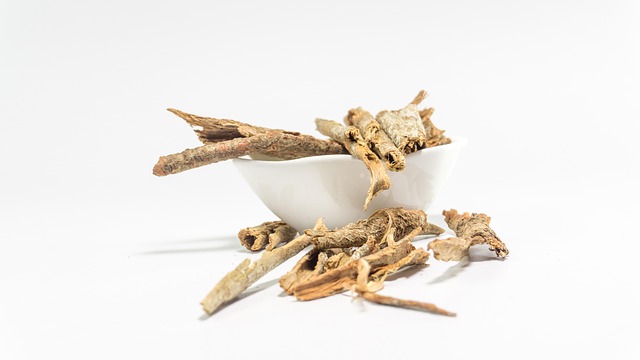Contrast therapy for muscle recovery uses hot and cold temperatures to reduce inflammation, speeding up healing. Heat increases blood flow, releases anti-inflammatory nitric oxide, and relieves tension, while cold narrows vessels, reduces swelling, and triggers endorphin release. This natural approach enhances nutrient delivery, flushes out waste, improves flexibility, and boosts athletic performance.
Inflammation is a double-edged sword—a vital defense mechanism but also a root cause of pain and discomfort. This article explores an effective, natural method to combat inflammation: contrast therapy. We delve into the science behind it, uncovering how alternating hot and cold exposure can reduce swelling and speed up muscle recovery. From understanding inflammation’s role as a protective response to exploring the benefits of both cold and heat therapies, this guide offers insights for optimal physical well-being, with a focus on contrast therapy’s potential for muscle recovery.
Understanding Inflammation: The Body's Defense Mechanism
Inflammation is a complex physiological process that serves as a protective mechanism, initiated by the body to respond to potential threats such as injuries, infections, or irritants. It involves a series of intricate cellular and chemical interactions designed to heal and defend. However, when inflammation becomes chronic or prolonged, it can lead to various health issues, including muscle soreness and delayed recovery.
Contrast therapy for muscle recovery leverages the principle that alternating between hot and cold temperatures can modulate inflammatory responses. Hot temperatures stimulate blood flow, promoting the release of nitric oxide, which has anti-inflammatory properties. In contrast, cold exposure triggers a narrowing of blood vessels, reducing inflammation and swelling at the site of injury or soreness. This natural balance helps to expedite muscle recovery by mitigating excess inflammation while ensuring a controlled healing environment.
Cold Therapy: Cooling Down to Calm Inflammation
Cold therapy, often referred to as cryotherapy, is an effective method to combat inflammation and promote muscle recovery. By exposing the body to extreme cold, such as ice baths or cold packs, we initiate a series of physiological responses that are beneficial for reducing swelling and pain. The sudden cold triggers blood vessels to constrict, which decreases blood flow to the affected area, minimizing further damage and inflammation.
This contrast therapy involves alternating between hot and cold temperatures, and the switch from heat to cold is particularly powerful. The initial warmth increases blood circulation, bringing nutrients and oxygen to sore muscles while removing metabolic waste products. When followed by a quick change to cold, it helps reduce muscle spasms and slows down the inflammatory response, providing a dual benefit for athletes and individuals seeking post-workout recovery or managing chronic inflammation.
Heat Up: Promoting Blood Flow and Healing
Heat plays a pivotal role in alternating hot and cold exposure for reducing inflammation. When you apply heat to a sore or injured area, it dilates blood vessels, increasing blood flow and promoting healing. This enhanced circulation brings essential nutrients and oxygen to the site, aiding in tissue repair and reducing the buildup of toxins that can contribute to inflammation. The warmth also helps relax muscles, alleviating tension and spasms associated with pain and discomfort.
This contrast therapy for muscle recovery isn’t just about heat’s direct effects. By alternating between hot and cold, you stimulate your body’s natural response to protect itself from perceived threats. The sudden shift from heat to cold triggers a release of endorphins, the body’s natural painkillers, further mitigating inflammation. This dynamic approach to healing mimics natural processes, fostering a more efficient recovery process for athletes, active individuals, or anyone seeking relief from chronic inflammation.
Contrast Therapy: Alternating Hot and Cold for Optimal Recovery
Contrast therapy, involving alternating hot and cold exposure, has emerged as a powerful tool for optimal recovery, particularly after physical exertion or injury. This ancient practice leverages the body’s natural response to temperature changes to reduce inflammation and promote healing. When you immerse yourself in hot water, blood vessels dilate, increasing blood flow and delivering oxygen and nutrients to sore muscles and tissues. This warmth also helps relax tight muscles and alleviate pain. Conversely, cold therapy constricts blood vessels, reducing blood flow and minimizing swelling. It can numb the affected area, providing immediate relief from discomfort.
By rapidly alternating between hot and cold, you can stimulate a enhanced healing response. This process, known as vaso-constriction and vaso-dilation, helps flush out metabolic waste products and inflammatory substances from the muscles and joints. Regular contrast therapy sessions can significantly shorten recovery times, improve flexibility, and enhance overall athletic performance. It’s a simple yet effective strategy that leverages the power of temperature to support your body’s natural healing mechanisms, making it a popular choice for athletes and active individuals seeking to optimize their muscle recovery.
By harnessing the power of contrast therapy, involving alternating hot and cold exposure, you can effectively reduce inflammation and promote optimal muscle recovery. This ancient practice has gained modern scientific backing, demonstrating its ability to stimulate blood flow, alleviate pain, and accelerate healing. Incorporating contrast therapy into your routine is a simple yet powerful way to take charge of your well-being and naturally support your body’s inflammatory response. So, whether you’re an athlete aiming for peak performance or simply seeking relief from everyday aches and pains, consider the benefits of this time-honored technique for faster recovery and enhanced overall health.
